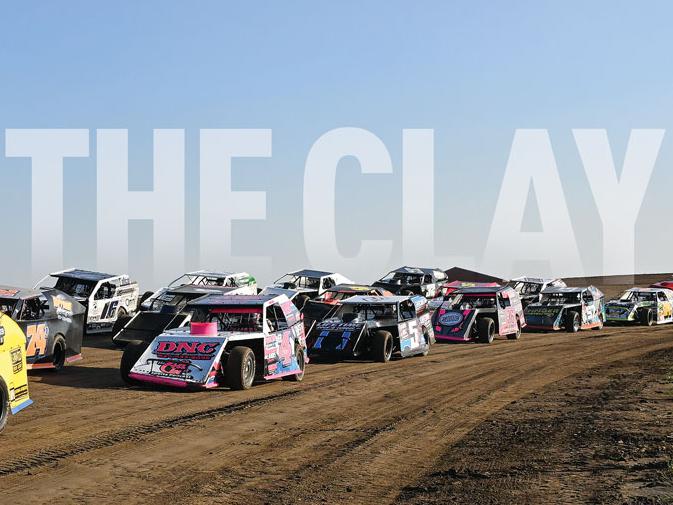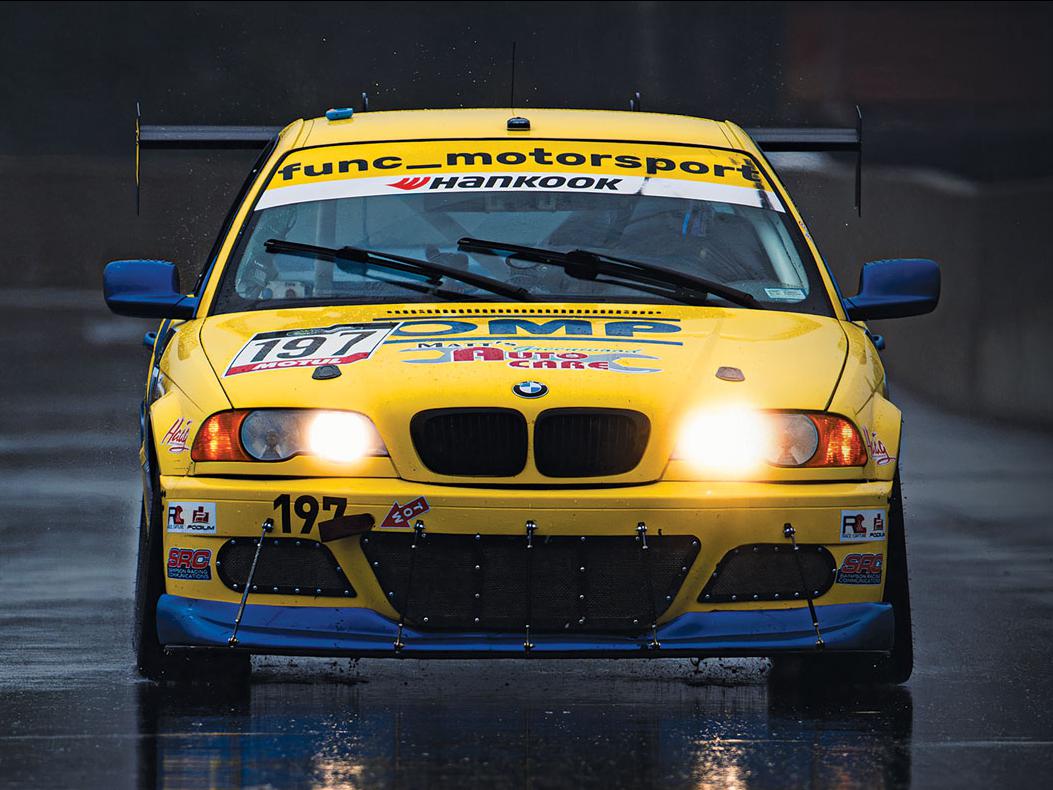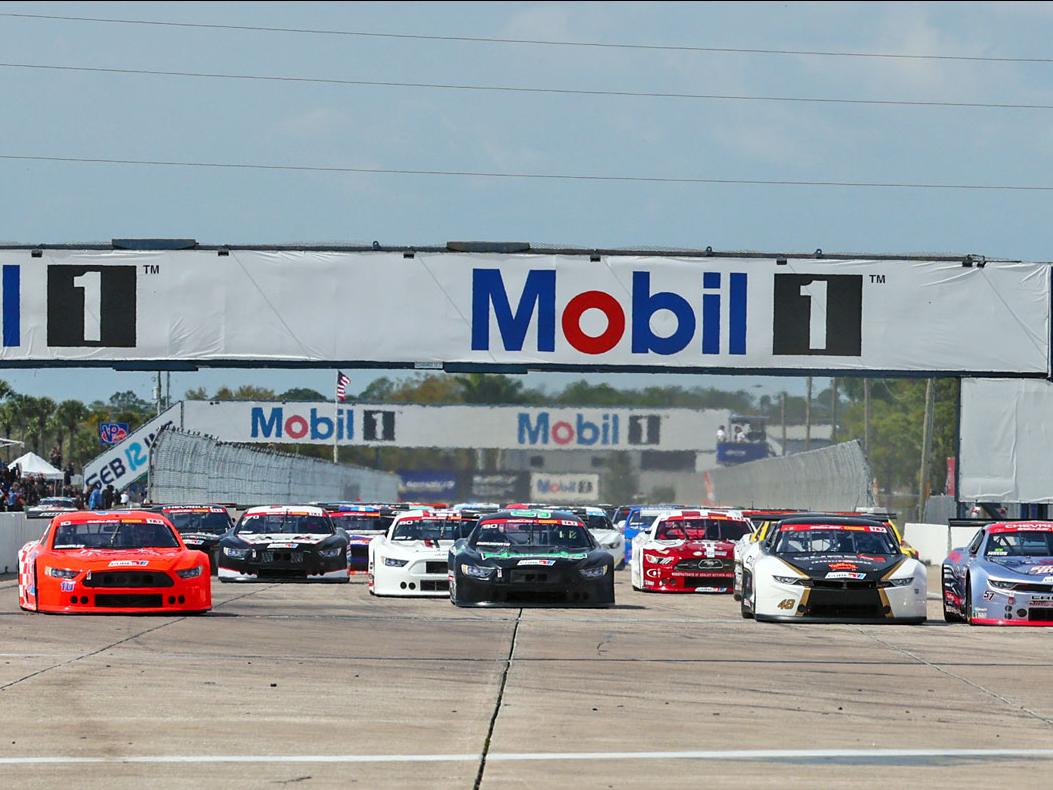Exploring the Open Space

Photo courtesy of CARS Tour
The shift toward spec and crate engine packages across stock car racing has reduced the number of powertrain combinations available to racers in many series and classes, but prospects still exist for engine builders willing to do their homework.
As stock car sanctioning bodies look for ways to reduce costs to racers and drum up sponsorship support from heavy hitters like Edelbrock and General Motors, spec and crate engine requirements have become increasingly prevalent. This shift has reduced the importance of the powerplant as a strategic element of teams’ racing programs within certain series and classes, and it has yielded some consternation among engine builders as a result.
“I think that money is the number one factor,” said Clint Anderson of CNC-Motorsports, Brookings, South Dakota. “And by that, I mean some kind of financial backing to the organization in the form of a large sponsorship agreement. The incentive is much greater for the sanctioning bodies than it is for the racers. If the organizers were so concerned about curbing costs, we’d see the regulations focused elsewhere. Even if they’re marginally curbing the cost of the engine, it still doesn’t stop racers from spending $30,000 or $40,000 on a chassis.”
That shift has convinced outfits like Dakota Engine Builders in Jamestown, North Dakota, to adjust its focus over recent years. “The crate engine trend has definitely taken a toll,” Jim Beyer explained. “It has taken business away from shops like ours, and we have put more energy into other disciplines as a result—drag racing, truck pulling, mud runners and so on. That said, we still have a pretty strong amount of business from circle track racing with the sanctioning bodies that aren’t building their rule sets around crate engines. We’ve been staying busy.”
IMCA President Brett Root said that demand for engine builders still exists with the Vinton, Iowa-based organization and others. “There is plenty of opportunity for engine builders within IMCA to build non-crate engines, and we also select engine shops to repair broken crate engines through IMCA’s sealing process.”
As we discovered, negotiating these changes comes down to identifying which classes to target and what support is needed.
The Crate Game
The growth of crate engine requirements in stock car racing has narrowed the field for would-be engine builders within the discipline, but Anderson said that there are still a few avenues to explore even within these limited confines. “Shops can’t really compete from a pricing perspective with a stock-style engine that’s built in mass quantities,” he observed. “They can become a certified crate engine rebuilder, though, and anybody can become a reseller for those. There’s also the option of becoming an approved crate engine builder, but there’s usually a fairly lengthy certification process associated with that. We never really looked into that very much because it would require taking a significant amount of money away from our other markets to support it.”
Jack McNelly of the CARS Tour in Mooresville, North Carolina, sees a clearly defined pathway for engine builders within crate motor stock car classes, though he also admits it’s a tight market in which to gain a foothold. “There’s a list of engine builders all over the country that are SEAL [Sealed Engine Alliance Leaders] approved. Builders are brought into the mix through an application process that is brought in front of the SEAL board and considered.”
Beyer also said some series provide racers with a wider range of options within classes where crate engines are often utilized. “The WISSOTA series, for instance, allows crate motors, but the majority of people racing with that series still run custom-built engines. WISSOTA also came up with its own plan to put together a ‘concept engine’ specification, where we control the rpm’s along with the lift of the cam in some classes. It basically created these rules to help us engine builders stay in business and provide these engines, and it’s good for the racers because it allows them to race with the engine of their preference. And the racing is good. Some nights in the Late Model races the 525-cubic-inch engine does well, and on other nights the open motors do well. It’s not one-sided. On any given night, either of those motors could win the event.”
Meanwhile, Root noted that engine decisions often come down to cost for many racers. “I sympathize with the anti-crate crowd to a certain extent, but the reason the crate has become so widespread is because of the perspective of some of those engine builders,” he said. “Racers, particularly IMCA racers, tend to migrate to what they can afford. In the end, the racer drives much of the market demand. If the crate is winning those racer decisions, that said it all to us.”
Spec, Not Stock
Although crate motors don’t provide stock car racers and engine builders with many options in terms of strategy, the same is not true of most spec engine rule sets. “In Late Model stocks, for instance, we use a ‘spec’ motor that isn’t sealed,” McNelly said. “In a rule set like that, the racers are told what parts must be in the motor, but there’s more leniency as far as the rest of the combination goes. The requirements mostly pertain to the main ingredients—camshaft, crank, rocker arms and that sort of thing. But because it’s not a sealed type of situation, competitors and builders have a bit more room to apply some strategy.”
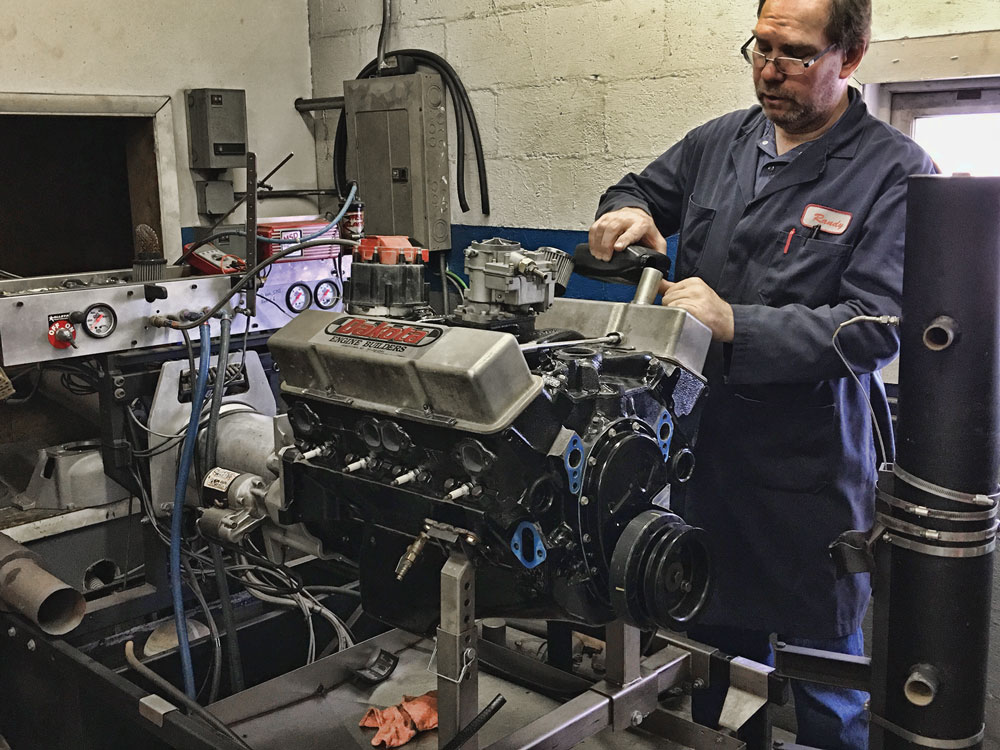
These classes also do not require engine builders to be part of an approved supplier list. “Any engine builder can get involved with the spec classes,” Beyer said. “With something like IMCA SportMod, we can build engines, and we do a fair amount of them. We have to abide by certain restrictions for things like compression and the type of cylinder heads that can be used, but there’s some flexibility there. And a lot can be
done with classes like A Mod and Late Model. There are restrictions as far as
cubic-inch limits, there’s a spec head we have to use, and we can only do so much porting in the head, but there aren’t a lot of other limitations. That allows us to develop the engine combinations we want to build.”
Root added that IMCA’s stock car division also has several other non-crate engine options available that land somewhere between spec and an anything-goes open rule set.
“The 350-cfm and 500-cfm carburetor engines fall into that category,” Root explained. “We use the 350-cfm carb to control the performance of that engine, and rule structure is fairly liberal with that one: No compression limit, no cubic-inch limit, no ‘spec’ parts per se, but we still utilize some rules in regard to things like steel heads, blocks, flat-tappet cams and such. The 500-cfm carb engine is more controlled, with a cubic-inch limit, compression limit and a spec head that is required. Those requirements come in addition to the rules that apply to the 350-cfm engine regarding the use of steel blocks, steel heads and flat tappet cams. But it also includes the most important rule for many engine builders: No crate motors allowed.”
Reliability is often more important than outright horsepower anyway, Anderson pointed out. “There’s still a lot of room for improvement. Some classes require a
stock rocker arm, and that’s not really a cost-effective solution for the racers when they’re tearing through a couple sets of them every season. Putting a full roller rocker
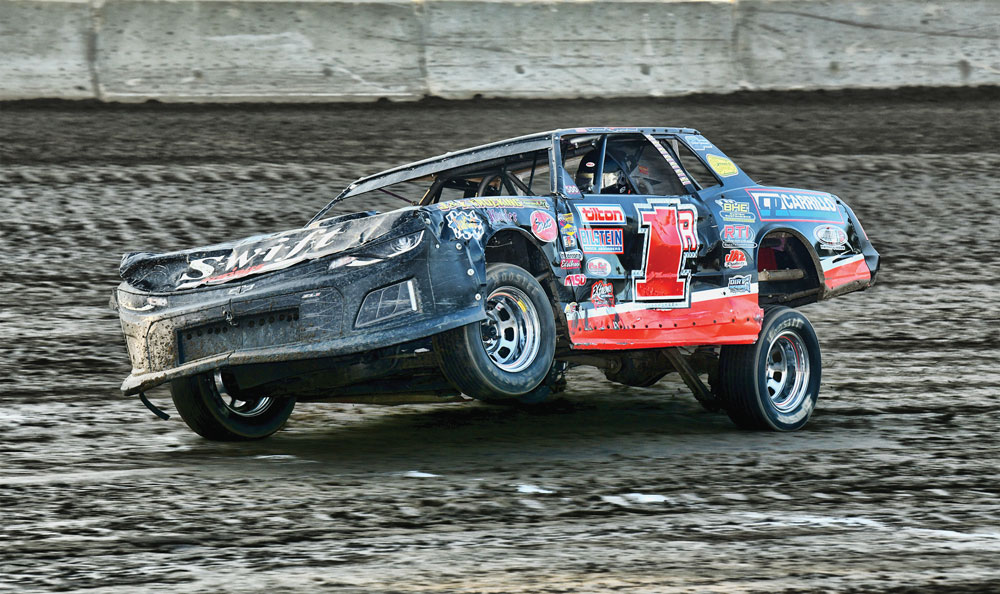
arm on there would have saved them some money in the long run. The same goes for exhaust manifolds. A header is going to save that racer some money in the long term because manifolds tend to create more heat and fail in a shorter amount of time.”
The Road Ahead
As with most motorsports disciplines today, the costs to campaign a stock car are on the rise despite efforts to stem the tide. “Let’s be honest here: What are you buying today for the same price or less than you paid six months ago?” McNelly asked. “Over the next few seasons, we’ll see measures taken to try to contain the costs, but this kind of racing is very expensive. These racers are spending an inordinate amount of money right now, and we’re reaching the point where our grandstands cannot support what these racers should be getting paid. The two numbers seem to be getting further apart.”
At the same time, Anderson identified some of the same issues as being potential catalysts for more open engine rule sets. “It’s tough to say how things will shake out, but I believe there’s a lot of incentive to loosen up some rules because of the supply chain problems we’re dealing with right now. Tire shortages have been one of the biggest issues that we’ve seen, and car counts may suffer if we don’t find a way to loosen things up so racers can still compete while keeping things balanced. That includes the engine rules. We may see sanctioning bodies ease up on the engine restrictions a little bit more, but that could also potentially add another level of complexity to tech inspection in the interest of keeping things fair. It’s a tough problem to solve.”
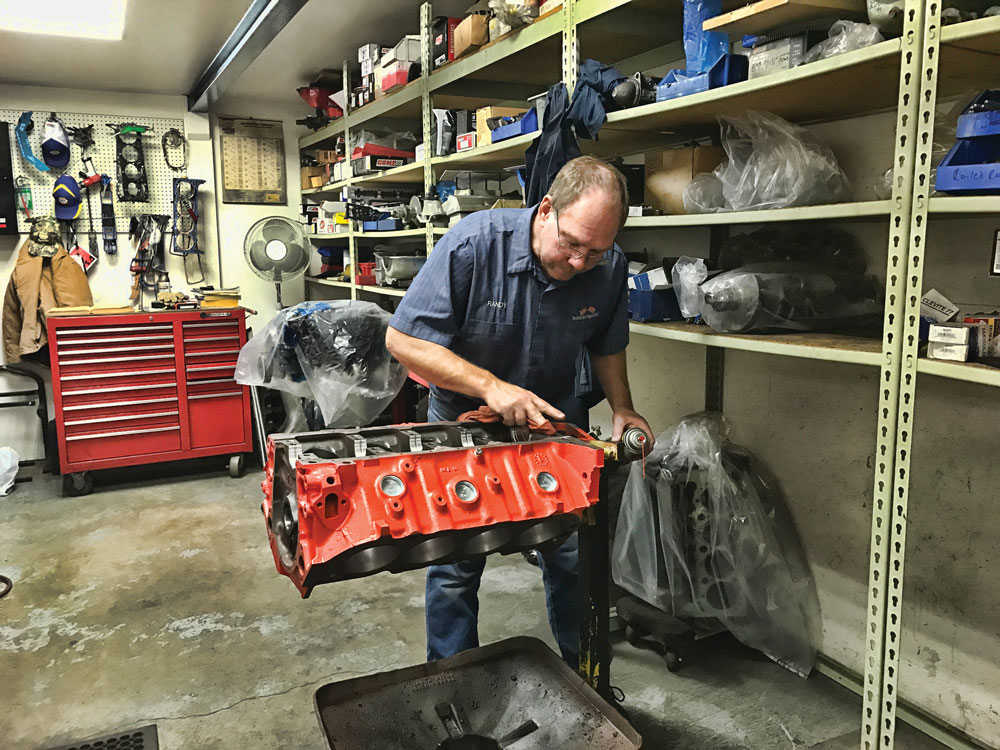
Beyer agreed that signs point toward costs heading upward despite everyone’s best efforts, but he also identifies some strategies to lower engine costs that may become more commonplace in the race seasons to come.
“One thing I do think we’ll see more of is rpm limits on the engines,” he said. “Lower rpm usually results in more longevity out of the engine, and that’s one way to address the increasing costs to run these cars. Most sanctioning bodies already have begun to incorporate rpm limits in certain classes, but I could imagine a scenario where they drop the limits further to get the engines to last a bit longer.
“It’s hard to say though,” Beyer admitted. “Racing is a unique business. Sometimes things change in fairly dramatic ways, and you just have to adjust to it. But the folks who really want to do it always seem to find a way.”
Sources
CARS Tour
carsracingtour.com
CNC-Motorsports
cnc-motorsports.com
Dakota Engine Builders
dakotaenginebuilders.com
IMCA
imca.com
 MEMBERSHIP LOGIN
MEMBERSHIP LOGIN JOIN PRI
JOIN PRI
